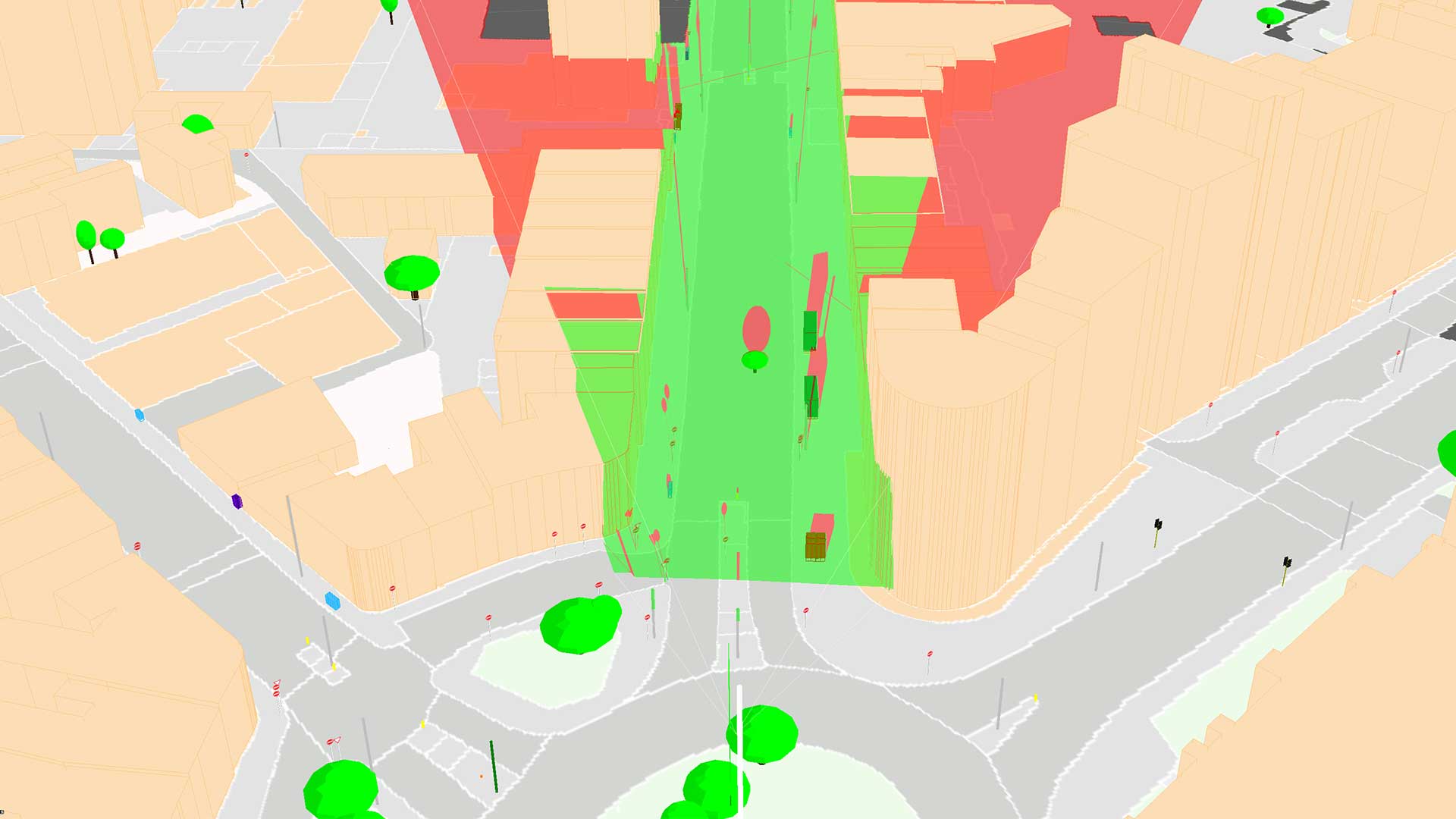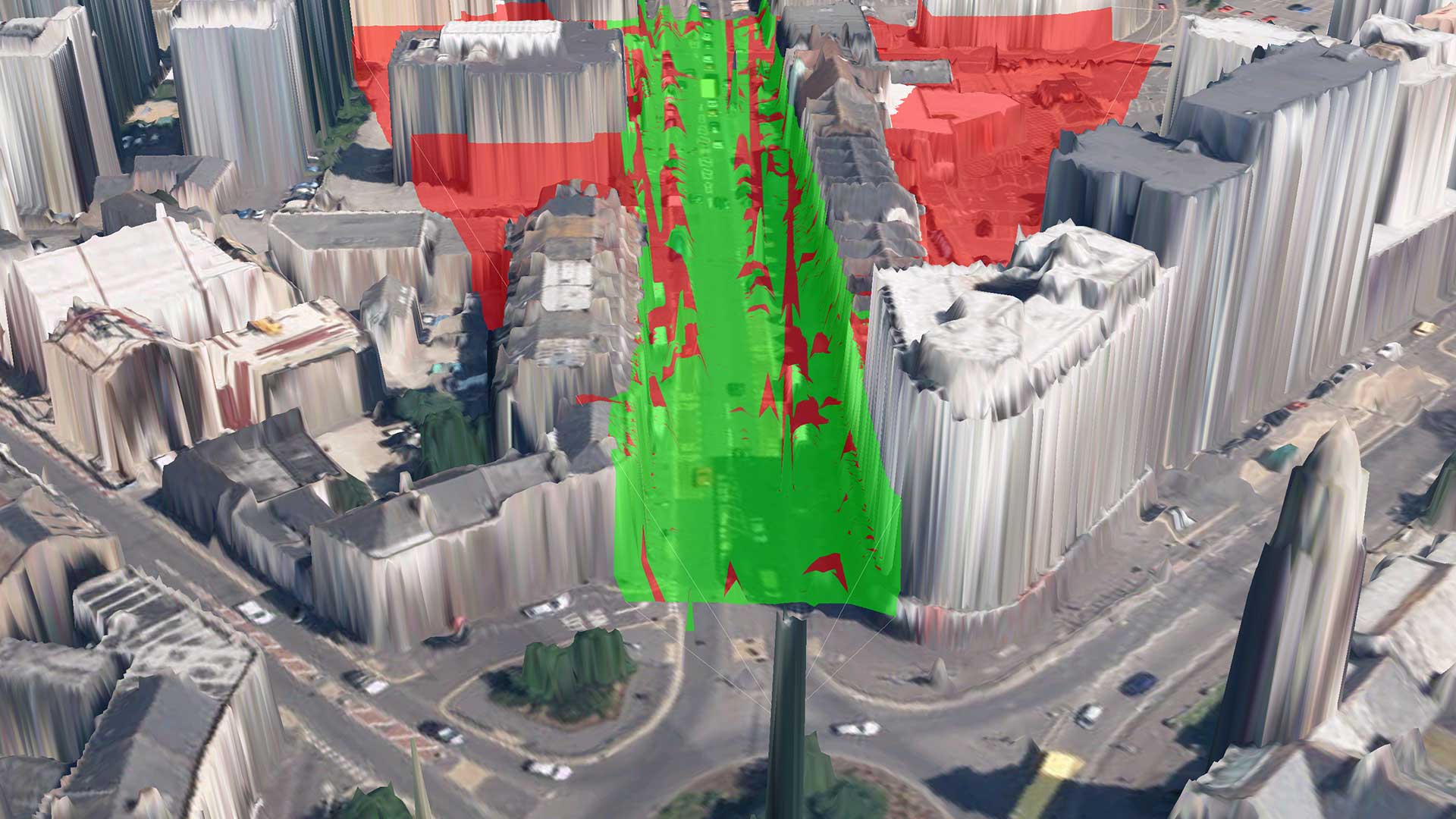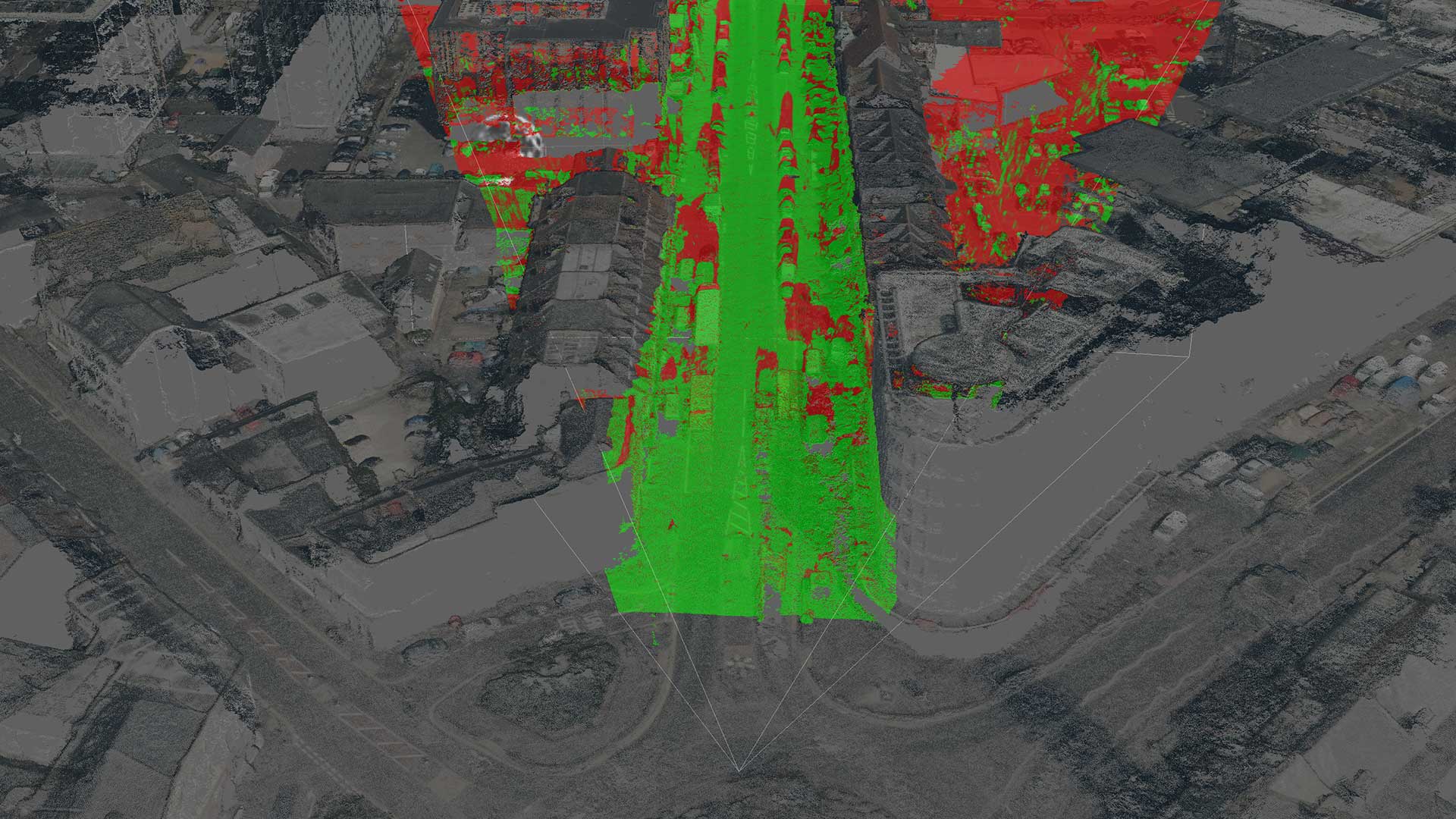How do you convince a sceptical public that 5G is more than just an over-hyped speed-bump for their smartphones, especially when many telcos are already abusing the term and adopting it for today’s LTE network services, and unscrupulous WiFi providers have been claiming 5G as their own?
The answer may well be to invite the public to see and judge for themselves.
TelecomTV’s Guy Daniels reports from Bristol.
The University of Bristol adopted such an approach with its recent Layered Realities Weekend. Its world-class Smart Internet Lab team took over the central Millennium Square in the city and created a multi-technology radio access network complete with mmWave and fibre backhaul and using spectrum test licenses from BT. It worked alongside technology partners Nokia to bring its latest 5G radio and networking technologies out of its lab and into demonstration marquees in the Square.
As part of the 5GUK Testbeds and Trials Programme, funded by the UK Government’s Department for Digital, Culture, Media and Sport (DCMS) and also including the 5G academic research powerhouses of the University of Surrey and Kings College London, the University of Bristol was keen to showcase its achievements to date. Yes, it is highly probable that the defining use case for 5G will be digitised industry, along with other key verticals (thanks in large part to network slicing), and it is also clear that mmWave networks and services will take several more years before they can be widely deployed, but the sooner the realities of 5G can be seen and understood the better.
However, rather than merely focusing on PoC-style demos and computer screens, the University took a rather novel approach. It worked with the city’s Watershed arts group to create a number of "artistic representations" of 5G and its capabilities. These include a VR group dance, an AR-based walking tour, and a rather unusual interactive light display using a water fountain and real-time avatar projections. Appropriately, they were held outside the We The Curious science museum.
Massive MIMO
With spectrum becoming ever-more scarce and the need for more wireless bandwidth increasing, how does the industry achieve more efficient sharing of wireless channels? One of the main solutions is Massive MIMO (Multiple-Input Multiple-Output), which is a multiantenna technique that exploits multipath scattering to increase system capacity, particularly below 6GHz where enhanced spectral efficiency is paramount.
The University of Bristol has been conducting pioneering work on Massive MIMO since 2010, collaborating with Lund University in Sweden and National Instruments. In fact, its research students hold the current world record for spectral efficiency using this technology. Massive MIMO places more information into a limited bandwidth by exploiting spatial signal processing, increasing the capability of base stations.
Connected and Autonomous Vehicles
Connected and autonomous vehicles will play a significant role in future transportation systems. Future 5G connectivity is one of the underpinning technologies allowing these vehicles to evolve from being autonomous systems to "cooperative entities" – communicating with other vehicles (V2V) and roadside infrastructure (V2I) to share sensory data and manoeuvring intentions. These cooperative vehicles are the key enabler of new Mobility as a Service (MaaS) models, with the information exchanged fundamental to improving road safety and efficiency, as well as paving the way to advanced ITS (intelligent transportation systems) applications.
The Communication Systems and Networks Group at the University of Bristol has been researching dependable V2X connectivity for over 10 years, investigating LTE-based cellular V2X and future 5G requirements, the use of mmWave and edge computing, and the all-important matter of security, privacy and trust. Low latency is a key issue, but so too is the very nature of a transport hierarchy – highly intermittent, ad-hoc and mobile (in the truest sense of the word) networks. A very hostile mixture of conditions when trying to sustain ubiquitous and reliable wireless connectivity.
Smart City Safety
The University of Bristol has deployed a smart city safety case study, as a proof of concept, to identify suspicious activities in the city. The idea is to show how advances in wireless communications system can help improve the safety of city inhabitants, where audio and video monitoring of public areas, coupled with automated municipality rule infraction detection, allow a quicker response to threats and anomalies.
For the case study at Layered Realities, the university team equipped a number of cycle helmets with 360-degree camera and Raspberry Pi devices, using WiFi in this instance to provide connectivity back to a simulated central control centre. It also uses only open-source frameworks, including OpenStack and Open Daylight.
For the video processing two key technologies have been used – NFV and Machine Learning. A virtual network function (VNF) video transcoder was designed, specified and deployed at Bristol’s NFVi via an OSM MANO orchestrator. Machine Learning was then applied with a face detection program. Both elements could be moved to the network edge and to the remote cloud to improve response time.
5GUK Exchange
As part of the UK government’s initiative to pioneer 5G technologies and applications, the 5GUK Testbeds and Trials programme is deploying a multi-site networking infrastructure. The 5GUK Exchange is the solution architecture, led by the University of Bristol, which interconnects virtualised testbed "islands" using SDN, NFV and open source software. It enables network researchers and trialists to initiate, monitor and terminate end-to-end 5G network services.
The Exchange holds information about the capabilities of the attached and remote islands, so an experimenter can combine services from different testbeds to create end-to-end services. It connects with the island orchestrators and acts as a proxy, managing the lifecycle of the experimental services. To enable cross-connections, the Exchange has a physical interconnection infrastructure.
The Smart Internet Lab at the University of Bristol is the lead architect of the 5G Exchange. It is bringing together three test network islands (one at Bristol and the other two at the University of Surrey and Kings College London) with the possibility of additional islands as the 5GUK Testbeds and Trials programme continues.

Zeetta Networks is a commercial spinout from the University Of Bristol. It has built the NetOS platform to enable network operators to benefit from cost and manpower savings whilst quickly building flexible infrastructures that can be monitored and managed centrally. It offers an open API environment, allowing third parties to develop their own network service applications to work with it. Its generic support framework can also support multi-vendor, multi-technology devices, enabling users to pick and choose the devices and technologies with which they want to work.
For the Layered Realities weekend, Zeetta Networks delivered the foundational technology to support the immersive series of events, using the NetOS platform to give each demonstration its own network slice to link to the smart city network. The company has also just won a bid to become the technology partner for the £4.3 million 5G RuralFirst project (part of the UK’s Testbeds and Trials programme), led by Cisco in partnership with the University of Strathclyde.
The UK’s Ordnance Survey (OS) recently published a guide to assist telecoms network planners with 5G millimetric wave (mmWave) deployment. The guide is the result of nearly two years of work conducted by OS – the world-renowned mapping organisation – the weather forecasters at the Met Office, and the 5G Innovation Centre at the University of Surrey. The goal, explains Richard Woodling, Managing Consultant at OS, was to identify the geospatial challenges that will affect deployment, how to identify these challenges and the techniques required to capture new geospatial features.
"We know that 5G will support ever larger data requirements and a wide range of new applications, such as Connected Autonomous Vehicles (CAVs), advanced manufacturing and robotics, haptic surgery, augmented reality, smart agriculture, smart homes and cities," said Richard Woodling, Managing Consultant at OS. "However, before we reach that point, it is becoming increasingly evident that geospatial planning is vital for cost effective rollout of 5G, particularly in the mmWave spectrum."
Existing network planning tools have proved more than adequate for 2G, 3G and 4G networks, but these models have limitations at the higher frequencies proposed for 5G. Radio signals at all frequencies are affected by the surrounding buildings, vegetation and material types, but the effects with mmWave are much more pronounced, where signals levels can be heavily attenuated or even completely stopped.
"For instance, in our research we discovered that in busy urban areas with a large volume of buses, haulage vehicles and trams, there is the strong possibility of reduced or blocked signals from one side of the street to the other," said Woodling. "If the use case demands ubiquitous coverage and high capacity, such as for CAVs deployment, which needs ubiquitous and reliable coverage for safety critical reasons, it is reasonable to model these vehicles as permanent features that essentially divide the road into two, requiring more antennae sites to be deployed."
To better understand 5G signal deployment in the field, the research team created a dynamic 3D digital mapping environment of the town of Bournemouth in which to virtually model 5G antenna placement. Network planners can exploit the accurate digital geospatial environment to place an access point, which immediately lets them see how signal communication is compromised. Using this method, a virtual network can be rapidly constructed, and performance assessed.
Included in the intelligence of OS’s Bournemouth model are features that can interrupt 5G’s signal, including weather conditions, tree foliage and the lifecycles of vegetation, and looking forward with access to pre-build data, modelling of the impact of future building projects. This provides the capability to model the communication coverage, range and reliability as the environment changes over time in a cost-effective manner. The project concludes that two major approaches are broadly to be considered: statistical modelling and ray tracing.
"Statistical modelling uses data collected from a large body of real-world observations in specific environments, such as ‘dense urban’," explained Woodling. "These observations are then combined into a model that can predict how signals will propagate in similar environments. These models can perform well in general cases predicting coverage and capacity, but they are much less useful when considering the precise placement of individual pieces of equipment in a dense urban environment requiring mmWave cells – as they do not take into consideration the real-world clutter of street furniture and natural features or, building materials.
"Ray tracing is a much more sophisticated approach overcoming the shortcomings of statistical modelling," he continued. "It requires a comprehensive understanding of the real-world environment. Ideally, including a detailed high-resolution 3D model including building materials and natural features (e.g. trees). This technique gives a high degree of accuracy, which is extremely beneficial in dense urban environments where the additional information has most impact and potential to reduce delays and costs. However the cost of acquiring additional data would need to be factored in to the overall business case."
Telcos interested in the full OS report can read it here.
 osMapping
osMapping osMapping
osMapping"We know that 5G will support ever larger data requirements and a wide range of new applications, such as Connected Autonomous Vehicles (CAVs), advanced manufacturing and robotics, haptic surgery, augmented reality, smart agriculture, smart homes and cities," said Richard Woodling, Managing Consultant at OS. "However, before we reach that point, it is becoming increasingly evident that geospatial planning is vital for cost effective rollout of 5G, particularly in the mmWave spectrum."
Existing network planning tools have proved more than adequate for 2G, 3G and 4G networks, but these models have limitations at the higher frequencies proposed for 5G. Radio signals at all frequencies are affected by the surrounding buildings, vegetation and material types, but the effects with mmWave are much more pronounced, where signals levels can be heavily attenuated or even completely stopped.
"For instance, in our research we discovered that in busy urban areas with a large volume of buses, haulage vehicles and trams, there is the strong possibility of reduced or blocked signals from one side of the street to the other," said Woodling. "If the use case demands ubiquitous coverage and high capacity, such as for CAVs deployment, which needs ubiquitous and reliable coverage for safety critical reasons, it is reasonable to model these vehicles as permanent features that essentially divide the road into two, requiring more antennae sites to be deployed."
To better understand 5G signal deployment in the field, the research team created a dynamic 3D digital mapping environment of the town of Bournemouth in which to virtually model 5G antenna placement. Network planners can exploit the accurate digital geospatial environment to place an access point, which immediately lets them see how signal communication is compromised. Using this method, a virtual network can be rapidly constructed, and performance assessed.
Included in the intelligence of OS’s Bournemouth model are features that can interrupt 5G’s signal, including weather conditions, tree foliage and the lifecycles of vegetation, and looking forward with access to pre-build data, modelling of the impact of future building projects. This provides the capability to model the communication coverage, range and reliability as the environment changes over time in a cost-effective manner. The project concludes that two major approaches are broadly to be considered: statistical modelling and ray tracing.
"Statistical modelling uses data collected from a large body of real-world observations in specific environments, such as ‘dense urban’," explained Woodling. "These observations are then combined into a model that can predict how signals will propagate in similar environments. These models can perform well in general cases predicting coverage and capacity, but they are much less useful when considering the precise placement of individual pieces of equipment in a dense urban environment requiring mmWave cells – as they do not take into consideration the real-world clutter of street furniture and natural features or, building materials.
"Ray tracing is a much more sophisticated approach overcoming the shortcomings of statistical modelling," he continued. "It requires a comprehensive understanding of the real-world environment. Ideally, including a detailed high-resolution 3D model including building materials and natural features (e.g. trees). This technique gives a high degree of accuracy, which is extremely beneficial in dense urban environments where the additional information has most impact and potential to reduce delays and costs. However the cost of acquiring additional data would need to be factored in to the overall business case."
Telcos interested in the full OS report can read it here.
OS MasterMap Topography Layer with building heights, street asset data, digital terrain model (DTM)
These datasets can only offer a simple assessment of the scene. The data do not include complex vegetation or street furniture and therefore may not be suitable for modelling the propagation of high frequency signals
 mmMapping01
mmMapping01OS MasterMap Topography Layer with building heights, street asset data, digital terrain model (DTM)
These datasets can only offer a simple assessment of the scene. The data do not include complex vegetation or street furniture and therefore may not be suitable for modelling the propagation of high frequency signals
Digital surface model (DSM)
A DSM will, according to its resolution, depict all above-ground features including buildings and vegetation, and is frequently viewed in conjunction with imagery or raster mapping. A DSM offers a 2.5D rather than 3D representation. As it is usually generated from NADIR aerial imagery, obscured features are not represented.
 mmMapping
mmMappingDigital surface model (DSM)
A DSM will, according to its resolution, depict all above-ground features including buildings and vegetation, and is frequently viewed in conjunction with imagery or raster mapping. A DSM offers a 2.5D rather than 3D representation. As it is usually generated from NADIR aerial imagery, obscured features are not represented.
Point cloud
Using the same NADIR imagery as used in the DSM and mesh examples, a point cloud can be used to model a scene from a top-down perspective.
 mmMapping-1
mmMapping-1Point cloud
Using the same NADIR imagery as used in the DSM and mesh examples, a point cloud can be used to model a scene from a top-down perspective.
Preparing for 5G’s Vertical take-off: it’s all a matter of balance

ECI CTO Hayim Porat talked with Ian Scales about 5G, the vertical markets it will enable telcos to tackle, and the necessity for CSPs to offer a multitude of service profiles underpinned by SLAs. But to get to the 5G ‘happy state’ telcos must carefully transition from their current equipment and network architectures to a new software-controlled environment. The successful journey, Hayim believes, involves a major balancing act across a variety of critical areas. It’s these balances, and the need to maintain and adjust to them that ECI has set out to support with its ‘multi-geared’ systems and ‘Elastic Service Platform’, designed to assist telcos on their journey.
5G is different from the previous mobile network generations because it is the first network to truly traverse the mobile/fixed, human/machine, static/dynamic divides. This diversity is 5G’s strength and ultimately its biggest selling point. It means that teamed up with a network flexible and intelligent enough to handle a huge range of protocols, and to swap them in and out ‘on the fly’, the 5G network will be able to tackle so-called vertical markets and their specific requirements in a way not possible with the previous ‘G’s.
For ECI’s CTO, Hayim Porat, this ability is key to understanding the value that 5G will bring to operators and therefore users.
No more playing catch-up
Hayim says that with the earlier mobile Gs the emphasis was about ‘leveling out the playing field’ by catching up with the capabilities of the fixed networks and providing them ‘on the go’ – with 5G it’s a completely different story.
"It’s the first network, either fixed or mobile, which is putting services as its main goal. So not just broadband connectivity or just broadband and voice. It will encompass on-demand and assured services as well as straight connectivity.
"5G networks will be built, or at least evolved, to cope with a world of multiple service tiers and that means that business users will be able to make a considered choice on what 5G service tier is appropriate for what application or what user within the organisation," he says.
Complexity: the constant telco enemy
"That means that, on the one hand, networks will be much more assured, but on the other, much more complex. So using humans to steer all this probably won’t cut it. The network will need to understand what you need to do and then to decide how to do it. So we need to move from the model of explicit configuration of the network and on to an intent-based model where you just tell the network what you want it to do, stand back and let it do it."
Very easy to write, probably very much harder to achieve.
Here are some of the critical balances that CSPs will have to negotiate on the journey to 5G.
Risk v revenue
5G might enable telcos can take highly calculated risks to differentiate services or win new users. "When you deliver dynamic services, a carrier needs to decide that ‘x’ service with ‘y’ SLA involves a risk worth taking otherwise it’s best not provide such guarantees.
Financial penalties to be borne by the provider in the event of failure to meet uptime or other assurance targets are an indication that the provider is going to work hard and invest optimally to ensure the SLA isn’t breached. But in 5G, penalties are not going to cut it anymore. Not meeting SLAs are just not an option in some situations – think autonomous vehicles or remote surgery. The users or user groups will be willing to pay a premium only if the risk of non-delivery is virtually nil.
Unfortunately, truly assuring services is an expensive task. "In 5G the number of slices, profiles and devices involved, will make SLA assurance a monumental effort", says Hayim.
Central v. distributed control
"The industry has a tendency to switch back and forth between centralisation and distributed control," says Hayim, "so there is a balance that needs to be struck." Furthermore, it may change over time as the technologies change.
"Basically, in a large-scale dynamic network you cannot rely on one centralised entity to have true, real-time control over the network. On the other hand, if you need to be agile but you also need to have performance guarantees, then centralised controls are important because it’s very difficult to create a distributed protocol with the sophistication required.
"I think the balance will be struck both ways. You can have a self-organising, dynamic network which doesn’t adhere to QoS parameters but does provide connectivity and, on top of that, you can install a centralised SDN controller to do the network-wide control and orchestration. The cooperation between them can be a winner."
Intelligent core v. smart edge
There seems to be an idea in the market that all you need to do to deploy 5G, is to invest in a smart edge. Then, somehow, your network becomes very smart and you "can do many new things," says Hayim.
"It’s a misconception because while there are some services that ‘just’ need a smart edge (like autonomous cars) when you create a multi-service network, services have a tendency to start up at one edge and then traverse the network to a different edge. If you have a ‘dumb core’ then you are lost, so you must invest there too. Again, the truth is that you need to balance both – smart edges and an intelligent core.
"There is not going to be the distinction we have at the moment between edge and core. It will just be one equally intelligent network which, when required, moves workloads to the optimum position" says Hayim.
Dynamism v. assurance
OTTs have dynamism and agility, but they clearly have this at the expense of assurance. By controlling the infrastructure in a detailed way (rather than just running data over the top of it) carriers have the ability to provide service assurance and maintain a premium over OTT players. "It’s the other side of the SLA," says Hayim. "You promise something, so you have to assure it. Assurance has to be ‘on the fly’ using probes on the network to not only measure failure as it occurs but, ideally, to proactively remedy it with very fast restoration of the service – having reconfigured network devices, rerouted traffic and so on – when it can’t."
The key ‘balance’ here is between spending to support network assurance and win the premium carriers can charge customers for providing it, balanced against the level of downtime and associated SLA penalty they can expect to incur while maintaining profitability (and customer goodwill).
Virtual white boxes v. dedicated appliances
Balances must be struck between white box virtualization with SDN and the continued usage of proprietary devices with embedded logic.
"White boxes can do everything you want but are often also the least efficient way of doing things in networking. At the other extreme you have ASIC and SoC-based devices which are very efficient in doing what they’re designed to do, but only that. So, carriers need to balance the flexibility and openness of white boxes with the technical cost advantages of more specific devices."
White boxes also have several disadvantages, says Hayim. "They are not as cheap as you think, which means that for specific tasks, like routing, an x86 box can work out more expensive than a dedicated router. Plus, to make it flexible you need to support so many features inside that it becomes less optimized for the job."
It’s a case of putting white boxes where there is an advantage but having ASIC devices where there isn’t. While there is an important place for white boxes in the telco data centre there are a lot of critical areas, optical transmission for instance, where they don’t make sense.
Human v. AI: telling us what it’s up to might be machine learning’s hardest AI task of all
"Today networks are run by lots of people," says Hayim. "It’s static, it’s not that efficient, but it is controllable."
He says that although we can apply machine learning and process automation to make it more agile and efficient there’s a problem.
"We have to remember that machines have a unique way of doing things and when you go into the field of deep learning it becomes clear that we are only beginning to understand what the machines are up to – sometimes they do things that we don’t understand at all leading to unexpected results."
So the best balance between humans and machines is that the humans should always be there, defining policies and KPIs (key performance indicators) and ensuring that the network behaves in expected ways.
Multi-geared network systems and the Elastic Services Platform
So how is ECI providing carriers with a way to transform while maintain an optimum balance in all those key areas?
"At ECI we’re offering carriers a transition plan using our multi-geared, multi-service, packet-optical systems and Elastic Services Platform for migrating them from the networks they have now to the SDN networks of the future based upon open source, open architectures and open APIs. We’re enabling customers to pick and choose from our portfolio the software and hardware they need, when they need it. Together we’re building the agile networks of tomorrow, enabling integration with BSS and OSS, other vendors and other controllers. The objective is to transition them from where they are today, to the full-service 5G platforms of the future.

